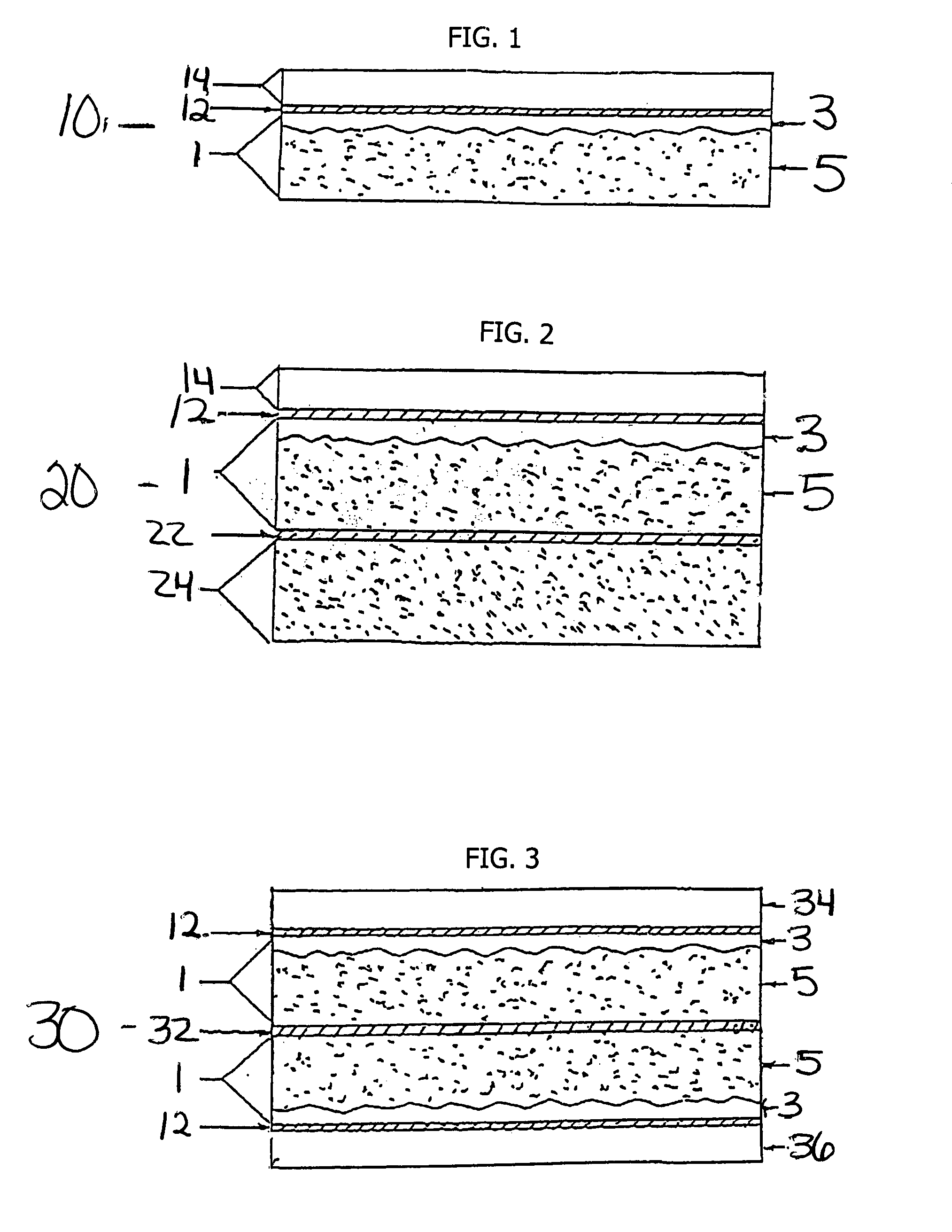Composite paperboards and method of making composite paperboards
a technology of composite paperboards and paperboards, applied in the field of paper laminates, can solve the problems of lack of strength of unbleached paperboards, inability to provide an ideal surface for printing high-quality graphics, and inability to meet the needs of printing high-quality graphics, etc., and achieve the effect of cost-effectiveness
- Summary
- Abstract
- Description
- Claims
- Application Information
AI Technical Summary
Benefits of technology
Problems solved by technology
Method used
Image
Examples
Embodiment Construction
[0025]All of the embodiment of the present invention have a common component, a two-ply base layer 1. The two-ply base layer 1 is formed on a papermaking machine having two wires described herein. The top ply is made from pulp stock consisting of dyed virgin pulp, dyed recycled pulp, bleached virgin pulp or bleached recycled pulp, or any combination thereof. The top ply is generally thinner than the bottom ply, which is comprised of unbleached virgin kraft pulp, unbleached recycled pulp or a combination thereof. Once the two-ply base layer 1 is formed and dried, it is used to create several embodiments of the present invention, namely interlaminate board, interlaminate B-board, composi-interlaminate board, dual-interlaminate board or composi board. Various embodiments of the present invention have high quality graphics and may be used to create point-of-purchase displays, disposable cups, plates and bowls, book covers, folding cartons or beverage carriers.
[0026]The paper web support...
PUM
| Property | Measurement | Unit |
|---|---|---|
| brightness | aaaaa | aaaaa |
| tear resistant | aaaaa | aaaaa |
| adhesive | aaaaa | aaaaa |
Abstract
Description
Claims
Application Information
 Login to View More
Login to View More - R&D
- Intellectual Property
- Life Sciences
- Materials
- Tech Scout
- Unparalleled Data Quality
- Higher Quality Content
- 60% Fewer Hallucinations
Browse by: Latest US Patents, China's latest patents, Technical Efficacy Thesaurus, Application Domain, Technology Topic, Popular Technical Reports.
© 2025 PatSnap. All rights reserved.Legal|Privacy policy|Modern Slavery Act Transparency Statement|Sitemap|About US| Contact US: help@patsnap.com



